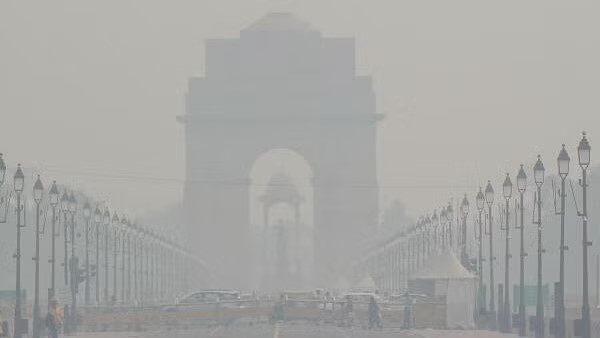New Delhi: The capital of India saw its air pollution levels rise to ‘severe’ on an official index on Wednesday for the first time this season as wind and temperature decreased, making it harder to see and affecting some flights.
India’s pollution control body reported that Delhi’s 24-hour air quality index (AQI) score had reached 418, surpassing Lahore as the most polluted city in the world according to Swiss organization IQAir’s live rankings.
The Central Pollution Control Board considers an AQI reading between 0 and 50 ” good,” while a reading exceeding 401 is considered “severe.” This affects healthy individuals and “seriously impacts” those who already have illnesses.
Also read: Smog Crisis: Lahore’s Air Quality Reaches ‘Hazardous’ Levels
Dust, pollutants, and smoke from illicit farm fires are trapped in chilly air, and the Indian capital struggles each winter with smog, a poisonous mixture of smoke and fog.
To address the issue, authorities have restricted private automobiles, closed schools, and halted some construction projects.
Punjab province in Pakistan, which borders India and is also experiencing poisonous air, has closed schools, prohibited outdoor activities, and directed several stores, marketplaces, and shopping centers to close early this month.
On Wednesday morning, Delhi’s PM2.5 concentration—particulate matter with a diameter of 2.5 microns or smaller that can enter the lungs and cause fatal illnesses and heart problems—was more than 120 times higher than what the World Health Organization recommends, according to IQAir.
Also read: Five Air Quality Monitors Installed in Peshawar Amid Record AQI Levels
Officials from the weather service also attributed the haze, which in some areas caused visibility to dip to zero, to high humidity, slow wind speeds, and a reduction in the lowest temperature from 17.9 degrees Celsius (63 degrees Fahrenheit) the day before to 17 degrees Celsius.
According to news agency ANI, eight flights were diverted at the Indira Gandhi International Airport in the capital.
According to the India Meteorological Department, dense fog, defined as fog that drops visibility to 50–200 meters (164-657 feet), was predicted to persist throughout northwest India for the “next 2-3 days.”

